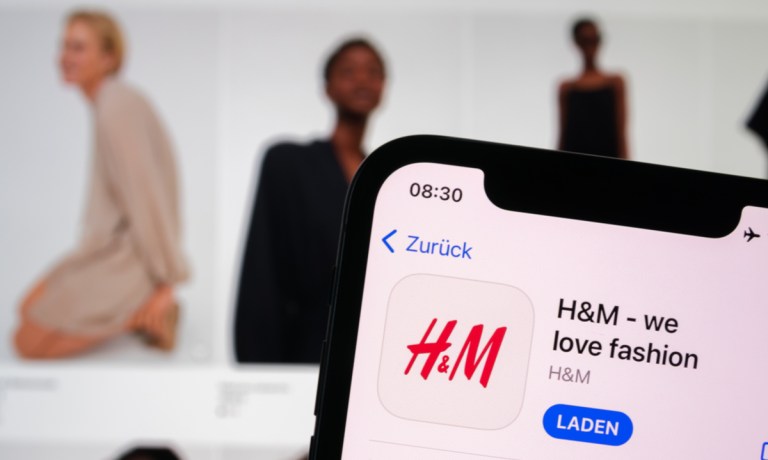
The announcement that H&M and Shein are diversifying their offerings through third-party assistance (brand incorporation or sellers) isn’t unusual because now when a consumer shops on Shein they can find a house appliance to go hand in hand with their summer crop top (It’s not totally bizarre, you can do the same thing on Amazon). It’s unusual because not only have both brands built a name for themselves through their self-branded products, it signifies something bigger that’s happening with retail.
In recent years, there has been a trend among brands and retailers toward diversifying their offerings by launching third-party marketplaces or incorporating third-party brands into their portfolios.
The strategy paves the way for customer acquisition and bolstering customer retention, particularly in the face of competition, inflation, and the impending resumption of student loan payments.
H&M’s CEO, Helena Helmersson, made an announcement on Thursday (June 29), unveiling the company’s plans to enhance its selection of third-party brands, both in their online platform and brick-and-mortar stores.
Customers can buy sneakers from brands like Adidas and New Balance along with clothing from Swedish mountaineering brand Klättermusen, across H&M’s range of stores and websites, including Arket, Cos, and & Other Stories. Additionally, H&M announced its plans to introduce its Monki brand on the Hong Kong eCommerce platform, Zalora.
H&M’s marketplace strategy, introduced last year, seeks to challenge online competitors such as Zalando, ASOS, and the fast-fashion behemoth Shein.
In contrast to its rival Zara, H&M has taken a different approach by providing affordable clothing to shoppers. While Zara has been successful in persuading customers to pay higher prices, H&M’s strategy aims cater to budget-conscious shoppers.
Zara, owned by Inditex, adopts a different approach by incorporating other brands through exclusive collaborations. For instance, they have partnered with South Korean label Ader Error and British shoemaker Clarks for special collections. Unlike H&M’s marketplace strategy, Zara’s focus is on limited-time collaborations with selected brands, offering exclusive fashions.
After the Swedish fashion giant reported a profit that exceeded expectations, Helmersson revealed in an interview that H&M has expanded its platform to include 70 external brands across six markets.
“This has been really well received by customers who also complement the H&M assortment with other brands,” Helmersson said. “Now we need to focus on making sure that we have the right kind of backbone, for example the right logistics, to really secure profitable growth.”
To broaden its customer base in the United States, Shein, an online fast-fashion platform, has taken steps to collaborate with smaller-scale U.S. vendors, including Los Angeles fashion footwear brand Cape Robbin. Shein aims to encourage customers to explore a wider range of offerings beyond clothing. This strategy is further emphasized by the establishment of temporary stores, reflecting Shein’s commitment to expanding its presence and diversifying its customer base in the U.S.
“The marketplace platform makes available a range of additional merchandise and shipping options, and we expect it to result in increased customer engagement and satisfaction,” the company said in December.
The move came as Shein has experienced a deceleration in growth within its segment of affordable and fast-produced fashion, which is in line with the broader trend in the fast-fashion industry. The industry has slowed down as budget-conscious consumers curtail spending and competition heats up.
In an example, Temu, an online retailer headquartered in Boston and owned by the parent company of Chinese social commerce giant Pinduoduo, has been grown rapidly through investments in marketing and offering discounts. Following its entry into the U.S. market in September, Temu reportedly surpassed Shein in mobile app downloads by November.
Read more: Shein Diversifies US Strategy, Launches Third-Party Marketplace and Pop-Ups
Loyalty has been harder to obtain, and the incorporation of third-party brands and marketplaces has played a critical role in addressing that challenge.
With the proliferation of eCommerce and the rise of online marketplaces, consumers have access to a vast array of choices. This has intensified competition among brands and retailers, making it harder to retain customer loyalty.
Moreover, with $400 billion in student debt coming due, consumers are becoming cautious about their spending habits. Consequently, brands and retailers must enhance their offerings to attract and capture consumer spending.
How third-party solutions may give brands and retailers like H&M and Shein a boost in customer acquisition and sales:
New customer segments. Third-party marketplaces provide an opportunity for brands and retailers to tap into new customer segments and expand their reach. By partnering with third-party sellers or brands that cater to different demographics, niches or locations, retailers can attract new customers.
Enhanced customer experience. Third-party brands contribute to an enriched customer experience by offering a more comprehensive selection of products and services. By curating a diverse range of offerings, retailers can cater to individual customer preferences and provide a more personalized shopping experience.
Cross-selling and upselling. By offering a range of products, retailers can encourage customers to explore complementary items or upgrade their purchases. This not only boosts sales but also deepens customer engagement and loyalty.
Data-driven personalization. Launching third-party brands can provide retailers with valuable data. This data can be leveraged to personalize marketing efforts, recommend relevant products, and enhance the overall customer experience. Personalization fosters a sense of loyalty by making customers feel understood and valued.
For example, General Mills leveraged enhanced analytics to boost its digital sales. During a recent call with analysts June 28, Chairman and CEO Jeff Harmening shared the food company’s fourth-quarter FY 2023 financial results. He highlighted how General Mills successfully used consumer data to increase digital sales in the U.S. by double digits.
“We plan to continue to leverage our data and analytical capabilities to assess and improve our presence on the digital shelf,” Harmening said. “These tools and processes enabled us to grow our U.S. eCommerce retail sales by 24% in fiscal ’23, and we plan to continue this momentum in fiscal ’24.”
Read also: General Mills’ eCommerce Personalization Drives 24% US Digital Sales Bump